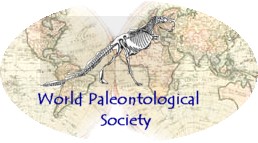
...bits and bites of
Cretaceous life
.5 to 1.5 cm in size.
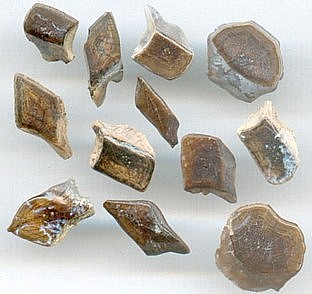
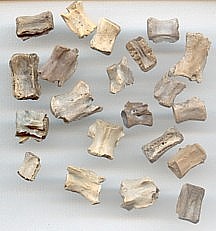
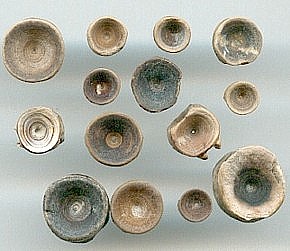
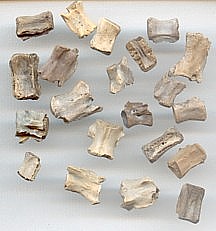
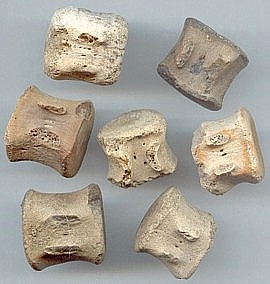
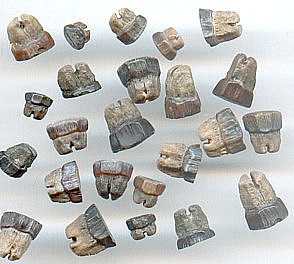

Cretaceous Room
-Champsosaur vertebrae
-Hadrosaur tendons
-Ankyolosaur ossicles
 |
||||||||||||||||||||||||||||||||||||||||
| Microsite Vertebrate Fossils ...bits and bites of Cretaceous life |
||||||||||||||||||||||||||||||||||||||||
| On hands and knees...nose to the ground.This is where most of the 'action' takes place in Cretaceous vertebrate fossil collecting. | ||||||||||||||||||||||||||||||||||||||||
| The specimens on this page are .5 to 1.5 cm in size. |
||||||||||||||||||||||||||||||||||||||||
 |
||||||||||||||||||||||||||||||||||||||||
 |
||||||||||||||||||||||||||||||||||||||||
| Vertebrae of various small reptiles and amphibians. Most vertebrae are not identifiable to the genus level. | ||||||||||||||||||||||||||||||||||||||||
| The ganoid scales of Lepisosteus, a garpike, are the most commom fish fossils found. These diamond-shaped enamel (ganoin) specimens vary in shape as to their position on the fish's body. | ||||||||||||||||||||||||||||||||||||||||
 |
||||||||||||||||||||||||||||||||||||||||
 |
||||||||||||||||||||||||||||||||||||||||
| Vertebrae of various 'bony' fish, mostly of the bowfin, Amia. These centra resemble small spools with concave ends. | ||||||||||||||||||||||||||||||||||||||||
| Vertebrae of amphibians including those of Scapherhepton, and Promesmodon. Also the vertebrae of the garpike, Lepisosteus. | ||||||||||||||||||||||||||||||||||||||||
 |
||||||||||||||||||||||||||||||||||||||||
 |
||||||||||||||||||||||||||||||||||||||||
| Hadrosaurs & Ceratposians..aren't these dinosaurs!! These small caudal (tail) vertebrae help emphasize that some dinosaur remains are no larger than those of other vertebrates. | ||||||||||||||||||||||||||||||||||||||||
| Myledaphus bipartitus is a skate known from its hexagonal, two-rooted teeth. These teeth were used in crushing freshwater molluscs. | ||||||||||||||||||||||||||||||||||||||||
 |
||||||||||||||||||||||||||||||||||||||||
| Return to the Cretaceous Room |
||||||||||||||||||||||||||||||||||||||||
| Other 'small stuff' -Champsosaur vertebrae -Hadrosaur tendons -Ankyolosaur ossicles |
||||||||||||||||||||||||||||||||||||||||